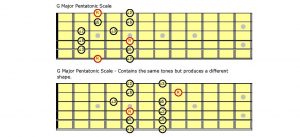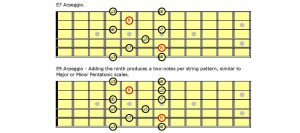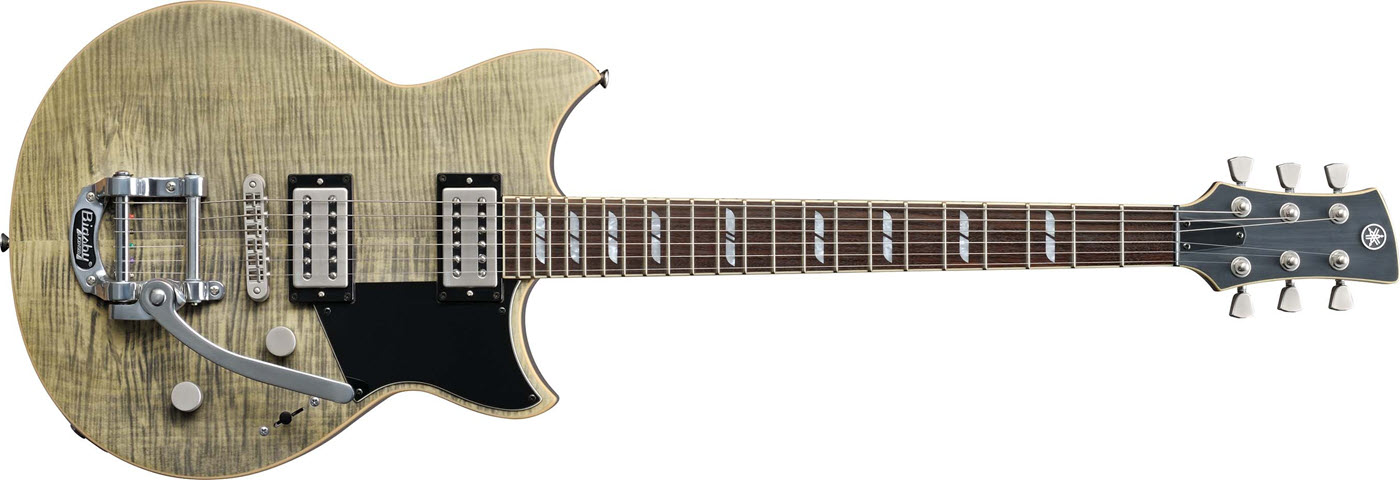Scales, Shapes and Contours
Discovering new melodic horizons.
In a recent blog posting, I explored the value of a music education and the career opportunities it can provide.
Of course, it takes much more than an education to forge a pathway to superstardom. Diversity, tenacity, creativity and consistency (as well as good social skills) will also need to be a part of your personal repertoire.
For example, guitar players know that when you learn a new chord, you also need to learn alternative shapes, inversions and alterations of the same chord along the entire fretboard. Similarly, in addition to memorizing harmonic note clusters, you should also know which scale they are derived from, as well as the scale position they occupy. Multiple fingerings of the same scales will also need to be burnt into your muscle memory before you can even start to weave interesting melodic lines and employ the plethora of expressive techniques available to you.
Did I mention that learning the guitar is a lot of hard work?
Trust me, it’s worth it, because these kinds of deep understandings will open up a whole new musical world just waiting to be explored. In this article, we’ll take a look at a few of them.
Scales
Scales can be defined as a series of single notes organized into a specific order of intervals. The seven tones of the major scale, for example, adhere to the following formula:
whole tone – whole tone – semitone – whole tone – whole tone – whole tone – semitone
This formula allows us to replicate the same scale in all 12 keys. I view scales as the “tools” we use to create our melodies and improvisations.
Shapes
Scales can be inverted along the fretboard to create new shapes. Each of these shapes contain all the same notes; however, the fingerings change to accommodate the specific interval formula. For example, the first pattern of the G major pentatonic scale starts with the note G at the third fret, as shown in the illustration below. The second pattern, however, starts on the note A at the fifth fret and has a completely different shape. These varying shapes offer new possibilities and creative ideas.

Interestingly, even if we know all the possible scale patterns needed to play a particular melody, our fingers and creative sensibilities often favor certain shapes when we create lead lines and improvise solos.
Contours
I definitely have my favorite shapes of the pentatonic and major scale modes. Within these go-to favorites, I find contours that I like and use these “shapes within shapes” to begin the search for motifs (short melodic phrases) that I then develop into longer solos or guitar hooks.
Sometimes these same contours can be found within the other scale patterns. As luck would have it, this gives us alternate note choices. In effect, we get the same rhythmic motif with a fresh set of tones.
I employ this approach much of the time, and it’s definitely become an integral part of my sound and style.
Arpeggios
Arpeggios can be found within scale shapes too, which means you’ll be able to identify chord-tone resolution points within your scales. These triad or seventh-chord arpeggios are also excellent sources of melodic nutrition and will provide the strongest consonant resolutions.
Adding a Ninth
I’ve developed a way of adding the ninth (i.e., the major second an octave higher) to my chord arpeggios in order to create two-notes per string arpeggio patterns that are similar in layout to pentatonic scales. The ninth isn’t necessarily a chord-tone resolution, but it allows me to create the contours I’m looking for.
For example, as shown in the illustration below, an E7 arpeggio will often produce patterns with only one note on each of the strings. Adding a ninth to these creates two-notes per string patterns. These are not dissimilar to major and minor pentatonic scales shapes, and therefore allow us to create licks that are reminiscent of pentatonic scales, but with more chord-tone resolutions.

Chromatic Magic
Connecting chord tones with chromatics (notes between the scale or chord tones) adds an air of tension before resolving each phrase. These “flavor” tones will also give your fingers a smooth way of flowing through and connecting multiple scale patterns. Just remember: Chromatic notes are passing tones, so don’t try to stop there for any amount of time!
String-Skipping
If you ever find yourself playing linear scale runs that seem to go nowhere and have little or no character, try skipping a string within your patterns to widen the intervals. This may take a little practice if you’ve never tried it, but the results can be distinctive and musically delicious.
I look for intervallic contours too. Design with your eyes and re-model the shapes you see into new licks and phrases.
The Video
In this video, I’m playing four-bar phrases from within all five patterns of the D blues scale, using many of the techniques and principles described above. I’m also leaving four measures of space for you to jam along between the riffs so you can develop solid phrasing concepts of your own.
Think of this as a musical conversation: Listen carefully to my phrases and try to respond rather than react. Package each phrase so that it resolves without stepping on my licks.
Note that all the guitar tones for this video were created with the Line 6 Helix modeling processor and recorded directly to my computer software.
The Guitar
The (now discontinued) Yamaha Revstar 720B used in this video is one of those guitars that works for most musical styles. It can be smooth when you’re playing jazz and blues, yet it really rocks when you want it to. The traditional, time-tested mahogany and flame-maple tonewoods add warmth and sustain to every note and its Filtertron-style humbuckers are the perfect conduit for noise-free, expressive delivery.

The Revstar range of guitars are also available with P90 pickups and a wrap-around bridge as an alternative to the supplied Filtertrons and Bigsby tremolo.
The Wrap-Up
Take some time to explore the landscape of your scales, shapes and patterns, and you’ll be rewarded with new horizons and exotic vistas for your digits (as well as your musical creativity) to explore. Take it from me: it’s an endeavor well worth pursuing!
Check out Robbie’s other postings.
Click here for more information about Yamaha Revstar guitars.
Click here for more information about the Line 6 Helix guitar processor.















